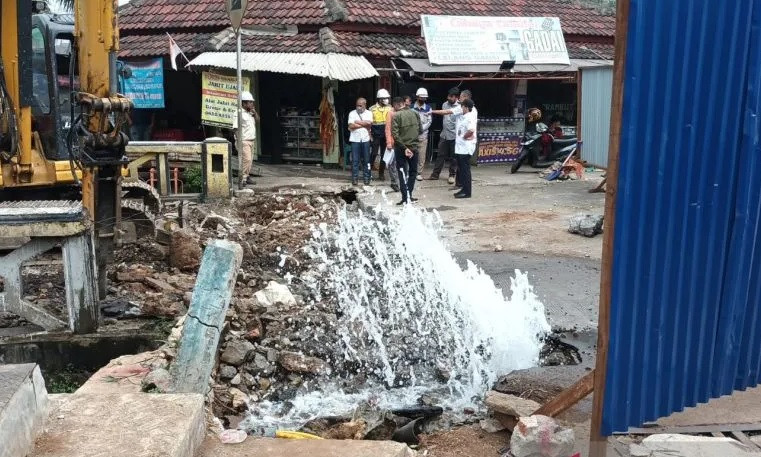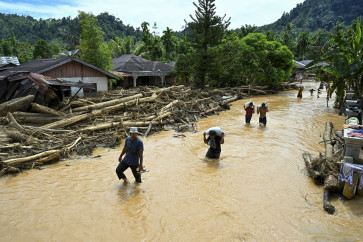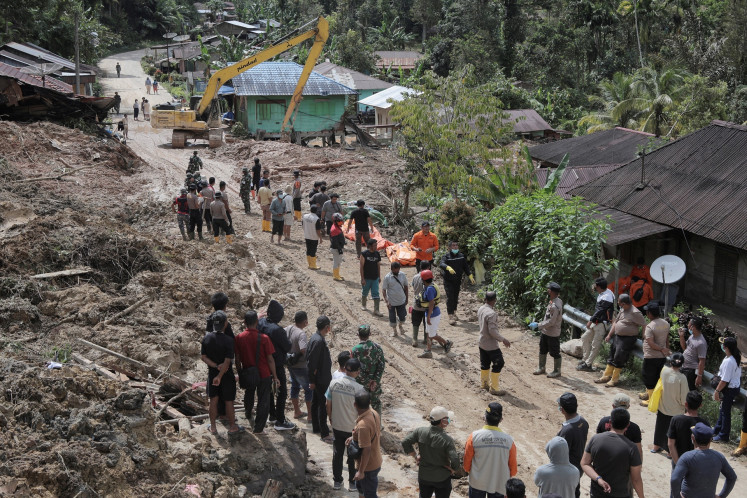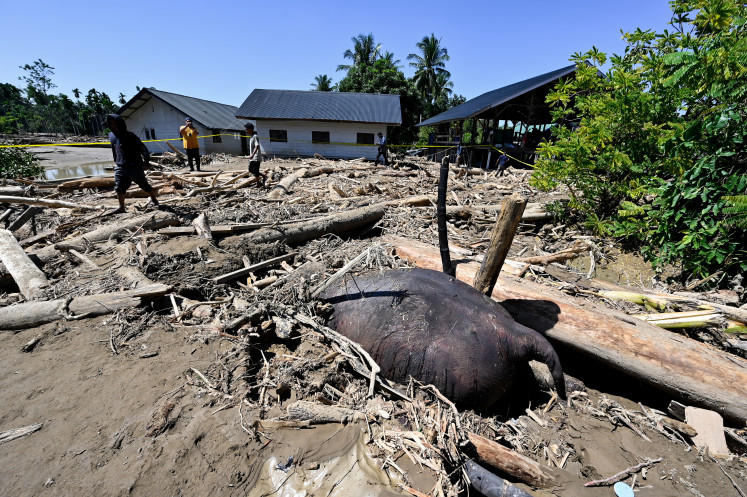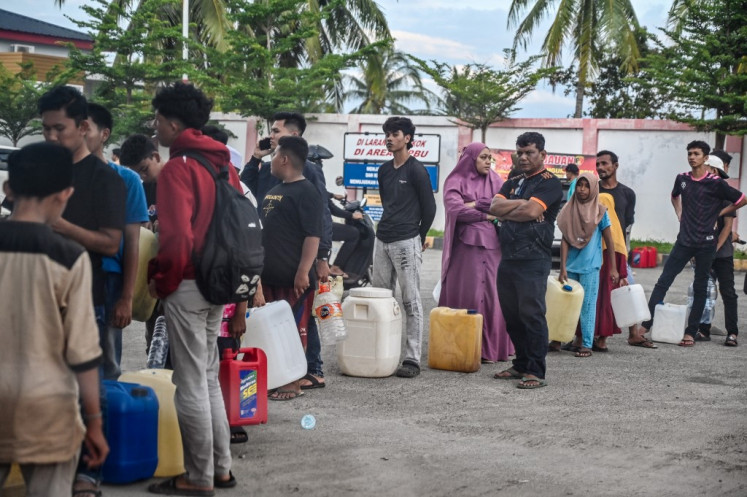Popular Reads
Top Results
Can't find what you're looking for?
View all search resultsPopular Reads
Top Results
Can't find what you're looking for?
View all search resultsThink global, act local to transform cities and our planet
The blueprint for linking local to global urban sustainability lies in three ways: through knowledge, solutions, and partnerships.
Change text size
Gift Premium Articles
to Anyone
W
ith urbanization here to stay, our future lies in our cities. All around the world, countries are experiencing the largest wave of urban growth in history. Indonesia has one of the region’s fastest urbanization rates, with over 70 percent of the population expected to live in cities by 2045, according to the World Bank 2019 report while Southeast Asia’s urbanization rate is at an all-time high.
Because of this, cities now lie at the forefront of the most pressing global challenges, including climate change, accounting for over 70 percent of global carbon emissions. While ensuring a sustainable urban future has always been on the global agenda, with cities being hotspots of the global carbon cycle, what are the steps necessary to achieve this?
Despite their carbon footprint, cities have great potential as catalysts for change. Contributing over 80 percent of global gross domestic product, cities are hubs for innovation and creativity, offering solutions that can pave the way toward a sustainable future.
As we reflect on World Cities Day, which falls on Oct. 31, not only must we continue to recognize the role cities play in realizing global sustainable development, this year’s theme of “Act Local to Go Global” highlights that any transformative global agenda must first be localized within our current urban fabric.
As we place cities at the heart of sustainable development, the blueprint for linking local to global urban sustainability lies in three ways: through knowledge, solutions, and partnerships.
Firstly, we need to apply a local lens to environmental issues, and what it means for climate action at a global level. Climate change is affecting countries all around the world. Particularly, the interdependency of water and energy is set to intensify in the coming years, impacting both energy and water security. However, how these issues manifest from city to city varies – from water supply issues to urban flooding – and so requires a crucial understanding of local conditions and concerns.
Notably, Indonesia is ranked in the top-third of countries in terms of climate risk, according to the World Bank. Its cities, in particular, face unique challenges due to the impacts of rapid urbanization, including increased urban heat island effects due to high-density built environments and flooding worsened by urban development.
As cities and the communities housed within them experience varied climate impacts and different vulnerabilities, it is vital that we do not lose sight of the local context while tackling the global issue of climate change. Only by taking a ground-up approach on understanding climate change can we ensure that no one is left behind.
Meanwhile, local sustainable urban solutions have the potential to contribute to a broader global toolbox that can be adaptable anywhere in the world. Being on the frontlines of climate change, cities have long been developing and adapting urban solutions to mitigate and address their new climate future, all while keeping their own local environmental challenges and issues in mind.
A prime example is China’s sponge cities. As China faced worsening urban floods, sponge cities utilize nature-based solutions to address these issues that come with grey infrastructure. While the concept was adapted from predecessors around the world, China’s approach has been touted as a “revolutionary rethink” in terms of urban planning.
Cities also are increasingly incorporating digital technologies to further bolster its climate resilience and achieve greater resource efficiencies. Indonesia initiated the “100 Smart Cities Movement” back in 2017, with an aim to build 100 smart cities across the country by 2045 to address urbanization challenges effectively. Digitalization can help cities navigate the trade-offs between more substantial sustainability efforts and their perceived barriers.
Specifically, digitalization can reimagine water systems in cities. Water plays an undeniably important role in cities, supporting both lives and livelihoods. However, not only is it a finite resource; it requires considerable amount of energy to move, treat, and process water for municipal and industrial use, which calls for urban solutions that are both energy and water efficient.
For example, by working with solution providers to connect the pumping solutions in a city’s water processes via a cloud platform, some cities are already attaining significant energy optimization in their water and wastewater network through intelligent technology. By leveraging advanced analytics and algorithms to predict leaks, municipals can also pre-emptively fix problems in the water network before they happen, preventing wastage of resources and energy.
Beyond our municipal water systems, buildings around the world – powered by water and energy – are also utilizing intelligent technology to tailor to specific circumstances. Building solution providers are increasingly looking at smart technology to achieve systems that can operate in optimized conditions at any time, using water and energy in an efficient manner.
While many of these solutions were developed with the local urban environment in mind, rapid urbanization means that cities around the world are finding greater similarities in their experiences of climate change and its profound consequences. Gathering key learnings and best practices from such case studies can provide powerful insights at a regional and even global level.
Lastly, continuous knowledge-building calls for inclusive collaboration locally and globally. Achieving climate objectives cannot be achieved without commitment at every stage, involving individuals, industry, and government. For us to achieve real change, collaboration is key to knowledge-sharing and understanding learnings and best practices.
Global partners can leverage their network and reach to link up the necessary stakeholders, resources, and expertise to bring an initiative to life, while local collaborators can not only provide insights from the local landscape, but also recommendations for the best way forward.
For instance, the C40 Cities Climate Leadership Group partnered with Grundfos and the Grundfos Foundation on the Water Safe Cities project, where the first phase of the research quantified the dire impacts of climate-driven drought and flooding on the world’s largest cities and its residents.
The research found that, in the current climate, flooding costs Jakarta US$96 per capita per year. Under a business-as-usual scenario, this is projected to increase by 75 percent to $168 per capita per year by 2050. However, if emissions and the impact of climate change are stabilized, this would sit at $139 per capita per year by 2050.
The insights from this phase have subsequently helped launch the second phase of this project, where they will work on a Water Accelerator for cities to pledge ambitious action to safeguard their water supply.
The project provides a starting point for wider collaboration between cities, national governments, and the private sector, all of whom have an incentive to protect cities from water risks.
***
The writer is CEO of Grundfos.

